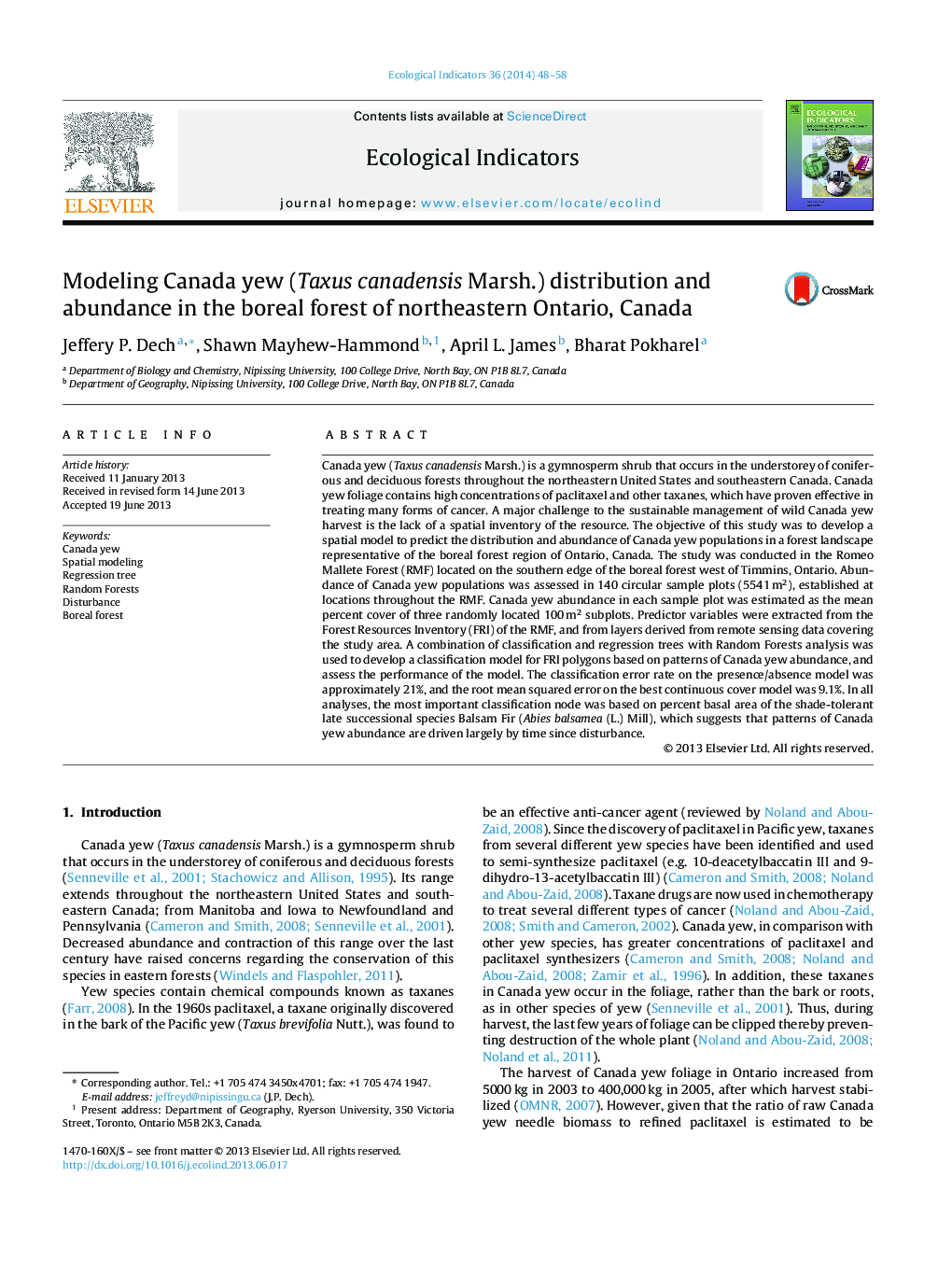| Article ID | Journal | Published Year | Pages | File Type |
|---|---|---|---|---|
| 4373295 | Ecological Indicators | 2014 | 11 Pages |
•The cover of Canada yew can be predicted using landscape-scale indicators.•Random Forests analysis produced a model predicting Canada yew cover with a root mean square error of 9.2%.•In the boreal forest of Ontario, the proportion of Balsam Fir in the canopy was the strongest indicator of Canada yew cover.•The relationship is likely the result of both species affinity for habitats that have experienced a long time period without major disturbance.
Canada yew (Taxus canadensis Marsh.) is a gymnosperm shrub that occurs in the understorey of coniferous and deciduous forests throughout the northeastern United States and southeastern Canada. Canada yew foliage contains high concentrations of paclitaxel and other taxanes, which have proven effective in treating many forms of cancer. A major challenge to the sustainable management of wild Canada yew harvest is the lack of a spatial inventory of the resource. The objective of this study was to develop a spatial model to predict the distribution and abundance of Canada yew populations in a forest landscape representative of the boreal forest region of Ontario, Canada. The study was conducted in the Romeo Mallete Forest (RMF) located on the southern edge of the boreal forest west of Timmins, Ontario. Abundance of Canada yew populations was assessed in 140 circular sample plots (5541 m2), established at locations throughout the RMF. Canada yew abundance in each sample plot was estimated as the mean percent cover of three randomly located 100 m2 subplots. Predictor variables were extracted from the Forest Resources Inventory (FRI) of the RMF, and from layers derived from remote sensing data covering the study area. A combination of classification and regression trees with Random Forests analysis was used to develop a classification model for FRI polygons based on patterns of Canada yew abundance, and assess the performance of the model. The classification error rate on the presence/absence model was approximately 21%, and the root mean squared error on the best continuous cover model was 9.1%. In all analyses, the most important classification node was based on percent basal area of the shade-tolerant late successional species Balsam Fir (Abies balsamea (L.) Mill), which suggests that patterns of Canada yew abundance are driven largely by time since disturbance.
